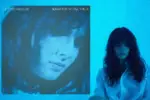The best albums feature a coherent storyline from beginning to end. You know, the ones where each song placement is intentional so you have to listen to it in order and then listen to it at least eight more times to appreciate the tiny details and amazing transitions.
Artists who combine their musicianship with their storytelling abilities create the most compelling concept albums, or collections of songs regarding a specific theme or story. Particularly gifted storytellers build fictional worlds through their music. Here are three concept albums that masterfully balance storytelling with musicality.
1. “Drones” by Muse
The English band’s seventh studio album, “Drones,” from 2015 returned Muse to their original alternative rock/progressive sound. The album explores the dehumanization of modern warfare through the journey of a protagonist who is introduced in the album’s opener, “Dead Inside.” The album evokes George Orwell’s novel “1984” about a controlling, repressive government and the lyrics reveal the protagonist’s loss of hope that makes them vulnerable to manipulation.
Following an interlude of a screaming drill sergeant, the third track, “Pyscho,” is from the perspective of the sergeant as they train the emotion out of the protagonist and turn them into a human drone. The protagonist recognizes their change and loss of self in “Mercy” and begs for rescue. “The Handler” is a turning point in the story because the protagonist realizes their power and decides to escape their oppressor. The protagonist breaks free in “Defector” and rebels against the system in “Revolt.”
The album interestingly includes a song detailing the background of the antagonist, the ruling dictator, in the song “The Globalist.” The song is over 10 minutes long and is broken down into three parts: their origin, their turn to nuclear warfare and the aftermath. Finally, the album closes with “Drones,” a cinematic classical song that uses the music of “Benedictus” by Giovanni Palestrina.
Band frontrunner Matthew “Matt” Bellamy described the album in an interview with Annie Mac of Radio 1 as “a modern metaphor for what it is to lose empathy.” The album is complete with a particularly awesome interlude that features an excerpt from a speech by President John F. Kennedy following the failed Bay of Pigs invasion, which transitions into the next song, “Defector.” The album’s multiple perspectives and cohesive narrative tells a complete story that successfully tackles bigger themes.
2. “Cry Baby” by Melanie Martinez
Fresh off “The Voice,” Melanie Martinez released her extraordinary alternative pop/electro-pop debut album, “Cry Baby,” in 2015. Martinez skillfully paints the picture of a twisted fairytale and dark childhood centered around the protagonist, Cry Baby, who is also a fantasy version of Martinez as a child. While the events surrounding Cry Baby are often exaggerated, such as the kidnapping and murders that did not occur to Martinez in real life, the character serves as a representation of her trauma and vulnerability.
The opening song, “Cry Baby,” introduces the character as an extremely sensitive young girl who is made fun of for her emotional side. “Dollhouse” explains how her family home appears to be a perfect dollhouse from the outside, but secretly, her mother is an alcoholic, her father is cheating on his wife and her brother is smoking cannabis to cope.
“Dollhouse” acts as a prequel to “Sippy Cup,” which zooms in to take a closer look at what goes on in the kitchen. Cry Baby’s drunk mother murders her husband and his mistress then puts his dead body in the cradle. When Cry Baby finds the bodies, her mother puts her to sleep with chloroform and she wakes up chained to the bed before her mother pours a liquid down her throat from a pink sippy cup to erase her memory of the night.
“Carousel” and “Alphabet Boy” depict Cry Baby’s toxic relationship, and its eventual end, with Alphabet Boy. She meets another boy, Johnny, in “Soap” and “Training Wheels” but he, along with everybody else, does not show up to her birthday in “Pity Party,” causing her to destroy her house in a rage. In “Tag, You’re It” and “Milk and Cookies,” Cry Baby is kidnapped by the bad wolf, who she then poisons and escapes from.
She meets Blue Boy in “Pacify Her” but her advances are unsuccessful because of his attraction to “basic bitches.” She learns the effects of conventionally attractive bodies on men and grows self-conscious about her own before realizing that she does not need to change herself in “Mrs. Potato Head.” Finally, Cry Baby learns to accept herself and all her crazy in “Mad Hatter.” The album’s use of innocent childhood imagery and metaphors excellently unpacks more mature topics and the darker theme of lost childhood.
3. “Trench” by Twenty One Pilots
In 2018, Twenty One Pilots released their fifth studio album, culminating in what is, perhaps, their magnum opus, “Trench.” The pop-rock/electro-pop album unveils a fictional world that began to develop in the band’s previous two albums. The 2013 album “Vessel” explores the recurring themes of insecurity, religion, mental health and suicide. The 2015 album “Blurryface” is named after the character, who main songwriter Tyler Joseph explains, “represents all the things I as an individual, but also everyone around me are insecure about.”
Prior to the release of “Trench” fans discovered dma.org, a collection of letters from a mysterious character, Clancy, who is trying to escape the walled-in city of Dema where “Trench” takes place. While the opening song “Jumpsuit” introduces the Dema narrative and the protagonist’s attempted escape, it does not include Clancy’s name, nor is it mentioned anywhere in the album.
Dema means “Tower of Silence,” which is a structure used for burials in Zoroastrianism, preventing vultures from eating bodies. The band explained on Reddit: “The concept of a dying religion is sad and intriguing, and the reason it was dying was something they could never control: The lack of the vultures needed to carry out their theology. Something so natural and logical can get in the way of your religion.”
The vulture is present on the cover and is a common motif in the album’s music videos and songs. For example, the symbol appears in the lyrics of the second track, “Levitate”: “Don’t feed me to the vultures. I am a vulture who feeds on pain.”
“Nico and the Niners” explains that nine bishops rule Dema and its chief leader is Nico, named after Nicolas Bourbaki (a pseudonym for a group of nine mathematicians). Nico is later revealed to be Blurryface. Clancy is a member of the Banditos, a rebel group trying to free the people of Dema. The Banditos adopt the color yellow to distinguish themselves because the bishops cannot see the color.
The album closes with “Leave the City” where the protagonist declares that one day he will leave, but is content with staying alive for now. Joseph’s lyric in “Bandito” perfectly summarizes his album: “I created this world to feel some control, destroy it if I want.” Joseph’s symbol-heavy work of art is an extended metaphor for the larger theme of his struggle with faith and mental health, tying it back to the previous two albums.
















